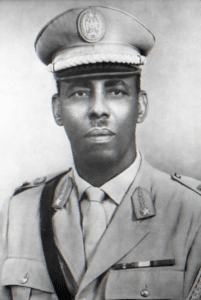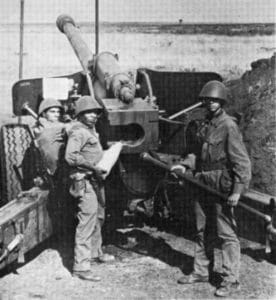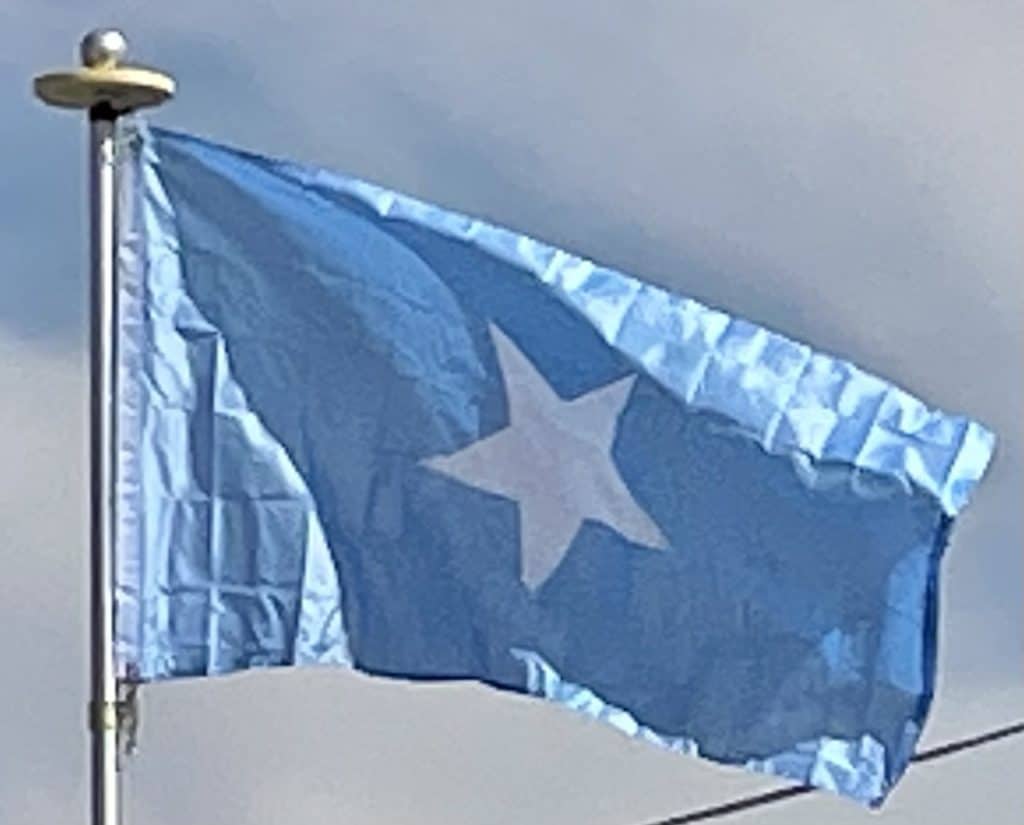On 1 July 1960, the two territories united to form the Somali Republic, albeit within boundaries drawn up by Italy and Britain. A government was formed by Abdullahi Issa and Muhammad Haji Ibrahim Egal with other members of the trusteeship and protectorate governments, with Abdulcadir Muhammed Aden as President of the Somali National Assembly, Aden Abdullah Osman Daar as President of the Somali Republic, and Abdirashid Ali Shermarke as Prime Minister (later to become president from 1967 to 1969).

On 15 October 1969, while paying a visit to the northern town of Las Anod, Somalia’s then President Abdirashid Ali Shermarke was shot dead by one of his own bodyguards. His assassination was quickly followed by a military coup d’état on 21 October 1969, in which the Somali Army seized power without encountering armed opposition — essentially a bloodless takeover. The putsch was spearheaded by Major General Mohamed Siad Barre, who at the time commanded the army.
Somali Democratic Republic (1969–1991):
The Supreme Revolutionary Council subsequently renamed the country the Somali Democratic Republic, dissolved the parliament and the Supreme Court, and suspended the constitution.
In July 1977, the Ogaden War broke out after Barre’s government used a plea for national unity to justify an aggressive incorporation of the predominantly Somali-inhabited Ogaden region of Ethiopia into a Pan-Somali Greater Somalia, along with the rich agricultural lands of south-eastern Ethiopia, infrastructure, and strategically important areas as far north as Djibouti. In the first week of the conflict, Somali armed forces took southern and central Ogaden and for most of the war, the Somali army scored continuous victories on the Ethiopian army and followed them as far as Sidamo. By September 1977, Somalia controlled 90% of the Ogaden and captured strategic cities such as Jijiga and put heavy pressure on Dire Dawa, threatening the train route from the latter city to Djibouti. After the siege of Harar, a massive unprecedented Soviet intervention consisting of 20,000 Cuban forces and several thousand Soviet experts came to the aid of Ethiopia’s communist Derg regime.

By 1978, the Somali troops were ultimately pushed out of the Ogaden. This shift in support by the Soviet Union motivated the Barre government to seek allies elsewhere. It eventually settled on the Soviets’ Cold War arch-rival, the United States, which had been courting the Somali government for some time. All in all, Somalia’s initial friendship with the Soviet Union and later partnership with the United States enabled it to build the largest army in Africa.
The regime was weakened in the 1980s as the Cold War drew to a close and Somalia’s strategic importance was diminished. The government became increasingly authoritarian, and resistance movements, encouraged by Ethiopia, sprang up across the country, eventually leading to the Somali Civil War. Among the militia groups were the Somali Salvation Democratic Front (SSDF), United Somali Congress (USC), Somali National Movement (SNM) and the Somali Patriotic Movement (SPM), together with the non-violent political oppositions of the Somali Democratic Movement (SDM), the Somali Democratic Alliance (SDA) and the Somali Manifesto Group (SMG).
Somalia Civil War:
In 1991, the Barre administration was ousted by a coalition of clan-based opposition groups, backed by Ethiopia’s then-ruling Derg regime and Libya. Following a meeting of the Somali National Movement and northern clans’ elders, the northern former British portion of the country declared its independence as the Republic of Somaliland in May 1991. Although de facto independent and relatively stable compared to the tumultuous south, it has not been recognized by any foreign government.
